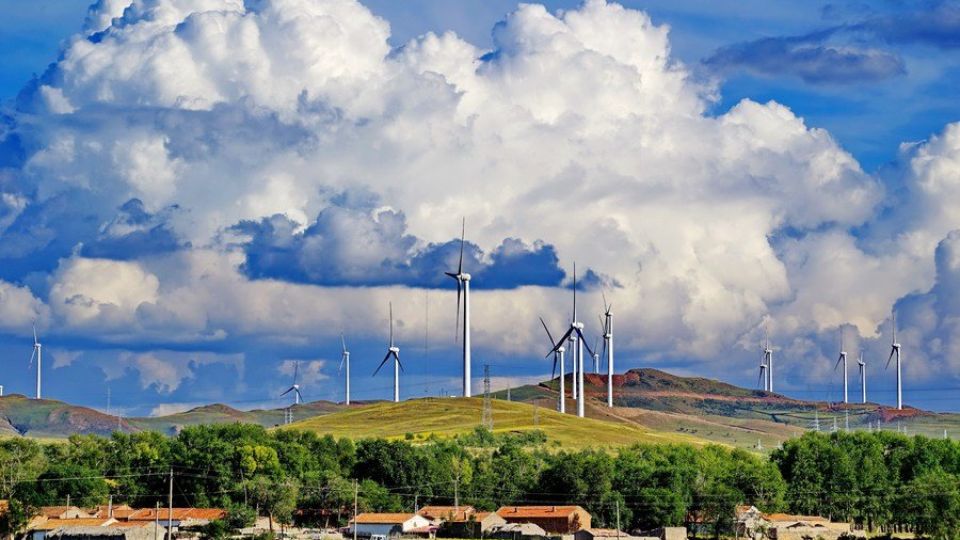October 31, 2023
BEIJING – China’s installed renewable energy capacity saw robust growth during the first nine months of this year amid the country’s efforts to advance its green transition, according to the National Energy Administration.
Renewable energy capacity additions rose 93 percent year-on-year to 172 million kilowatts during the first three quarters, accounting for 76 percent of the country’s total newly added installations, the NEA said.
Solar power installation during the reporting period rose 145 percent year-on-year to 128.94 million kW, followed by wind power of 33.48 million kW, said Wang Dapeng, deputy head of the administration’s new energy and renewable energy department, during a news conference in Beijing on Monday.
As part of China’s efforts to speed up the construction of solar and wind power generation facilities in the Gobi Desert and other arid regions, construction has begun on all of the first large-scale wind and solar power bases, a project launched at the end of 2021 that comprises a total of around 100 gigawatts of wind and solar power capacity in desert areas, the administration said.
The bases are mainly in the Xinjiang Uygur, Inner Mongolia and Ningxia Hui autonomous regions, and in Qinghai, Gansu and Shaanxi provinces, which all possess abundant wind and solar resources.
Construction has also begun on the second group of bases, comprising more than 30 million kW of wind and solar power capacity in desert areas, while the project list for the third group has been officially issued for implementation, it added.
Luo Zuoxian, head of intelligence and research at the Sinopec Economics and Development Research Institute, said China has been making huge strides in shifting from its dependence on coal to the use of renewables for power generation, a boon to achieving the country’s carbon goals and tackling climate change.
The installed capacity of renewable energy, which has surpassed that of thermal power, is on track to account for half of the country’s total installed capacity, from the current 49.6 percent, as renewable energy like solar and wind power has been playing an increasingly prominent role in ensuring the country’s energy supply, Luo said.
The steady growth of renewables was accompanied by accelerated investment in related infrastructure projects.
Energy investment in China maintained rapid growth in the first three quarters, with total investment in key energy projects under construction and those planned to begin within the year reaching nearly 1.5 trillion yuan ($205 billion) during the first eight months, up 20.7 percent compared with the same period in the previous year, said Dong Wancheng, deputy director of the development and planning department of the NEA.
Investment in nonfossil energy projects accounted for more than 40 percent of the total national energy investment, Dong said.


